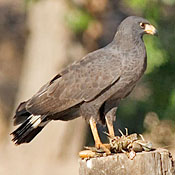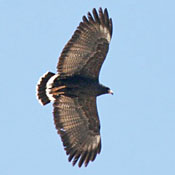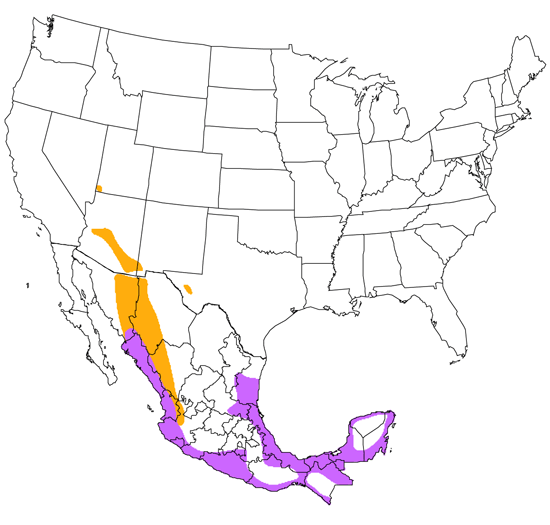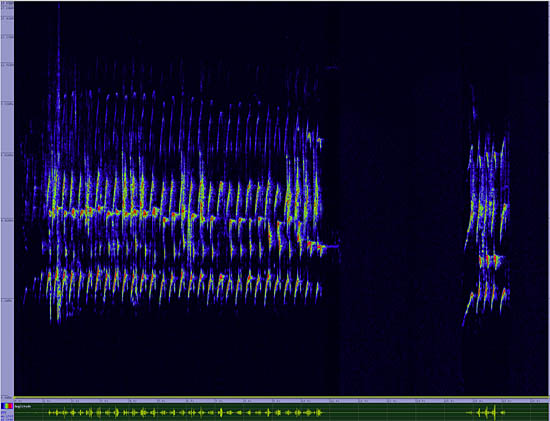Common Black Hawk
Buteogallus anthracinus

Hawk Like

Length: 21 in. (53 cm )
Found primarily along forested water ways, rivers and swamps, this hawk feeds on frogs, fish, snakes and crabs and occasionally small mammals and insects. The large, bulky stick nest is placed in the high crotch of a cottonwood, sycamore or mesquite tree. In the desert southwest, this hawk spends considerable time sitting in the shade of tall canopy trees. It is most obvious when it soars during warm parts of the day high overhead.
The four-digit banding code is CBHA.
Bibliographic details:
- Article: Common Black Hawk
- Author(s): Dr. Biology
- Publisher: Arizona State University School of Life Sciences Ask A Biologist
- Site name: ASU - Ask A Biologist
- Date published: 13 Jul, 2017
- Date accessed: 9 October, 2025
- Link: https://askabiologist.asu.edu/activities/bird/common-black-hawk
APA Style
Dr. Biology. (Thu, 07/13/2017 - 15:36). Common Black Hawk. ASU - Ask A Biologist. Retrieved from https://askabiologist.asu.edu/activities/bird/common-black-hawk
Chicago Manual of Style
Dr. Biology. "Common Black Hawk". ASU - Ask A Biologist. 13 Jul 2017. https://askabiologist.asu.edu/activities/bird/common-black-hawk
MLA 2017 Style
Dr. Biology. "Common Black Hawk". ASU - Ask A Biologist. 13 Jul 2017. ASU - Ask A Biologist, Web. https://askabiologist.asu.edu/activities/bird/common-black-hawk
Be Part of
Ask A Biologist
By volunteering, or simply sending us feedback on the site. Scientists, teachers, writers, illustrators, and translators are all important to the program. If you are interested in helping with the website we have a Volunteers page to get the process started.








